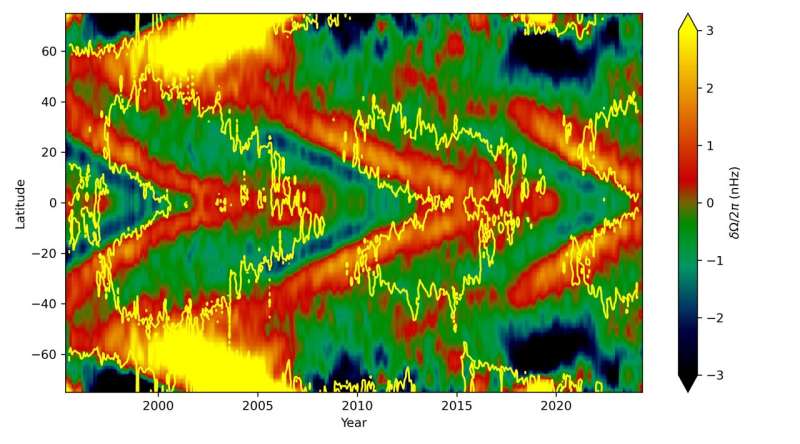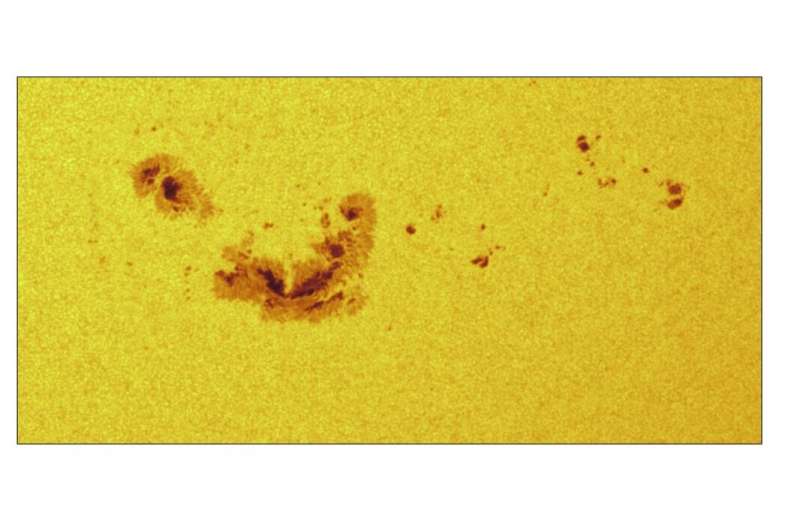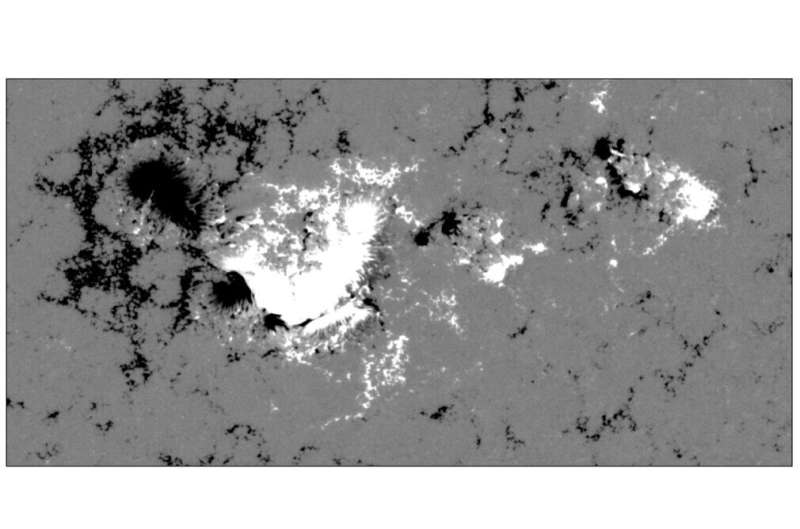This article has been reviewed according to Science X's editorial process and policies. Editors have highlighted the following attributes while ensuring the content's credibility:
fact-checked
trusted source
proofread
Early riser: The sun is already starting its next solar cycle—despite being halfway through its current one

The first rumblings of the sun's next 11-year solar cycle have been detected in sound waves inside our home star—even though it is only halfway through its current one.
This existing cycle is now at its peak, or "solar maximum"—which is when the sun's magnetic field flips and its poles swap places—until mid-2025.
It affects activity on the sun's surface, with sunspots, flares and coronal mass ejections all more rampant at solar maximum. This leads to a surge in electromagnetic energy hurtling towards the Earth and makes aurorae visible more often and at lower altitudes.
The current solar cycle, named Cycle 25 because it is the 25th since 1755 when extensive recording of solar sunspot activity began, started in 2019.
It is not expected to end for another six years but the first signs that the next solar cycle is beginning have been spotted by researchers from the University of Birmingham and presented at the Royal Astronomical Society's National Astronomy Meeting in Hull.
Astronomers use the sun's internal sound waves to measure how it rotates, making visible a pattern of bands (solar torsional oscillation) that rotate slightly faster or slower. These move towards the sun's equator and its poles during the activity cycle.

The faster-rotation belts tend to show up before the next solar cycle officially begins.
Dr. Rachel Howe and her international collaborators have discovered a faint indication that the next solar cycle is starting to show up in the data they have been analyzing from the rotation bands.
"If you go back one solar cycle—11 years—on the plot, you can see something similar that seems to join up with the shape that we saw in 2017. It went on to be a feature of the present solar cycle, Cycle 25," said Dr. Howe, a research fellow at the University of Birmingham.
"We're likely seeing the first traces of Cycle 26, which won't officially start until about 2030."
Solar torsional oscillation signals have been studied using helioseismic data from the Global Oscillation Network Group (GONG), the Michelson Doppler Imager (MDI) onboard the Solar and Heliospheric Observatory, and the Helioseismic and Magnetic Imager (HMI) on board the Solar Dynamics Observatory since 1995.

The data now covers the first four years of Solar Cycles 23, 24 and 25, allowing researchers to compare the rising phases of these cycles.
Dr. Howe has been following the changes in the sun's rotation for about 25 years, when scientists only had a portion of data from Solar Cycle 23 from GONG and MDI.
They could see the pattern of faster-moving material drifting towards the equator along with the sunspots. Since then, they have watched the pattern repeat (but not exactly) as Cycle 24 came and went and again as Cycle 25 grew.
"It's exciting to see the first hint that the pattern will repeat again in Cycle 26, which is due to start in about six years.
"With more data, I hope we can understand more about the part these flows play in the intricate dance of plasma and magnetic fields that form the solar cycle," she said.
Provided by Royal Astronomical Society





















